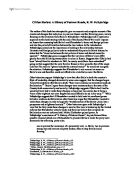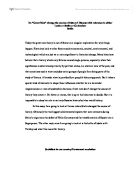A history to overcomeIndigenous Australians have experienced many setbacks throughout their long history. Extreme climates, colonization, and the stolen generations; just to name a few of the many challenges Aboriginals and Torres Strait Islanders have endured. Most have overcome these past disputes. However, in Australia today, there is a prominent gap forming between Indigenous Australians and the rest of the population. Indigenous people in contemporary Australia face discrimination that leads to a decline in housing, health, educational conditions.Housing and land rights have become a major issue for Aboriginals and Torres Strait Islanders. In 2007, the Federal Government, under John Howard introduced the Northern Territory National Emergency Response. This was implemented after the release of the Little Children are Sacred report that claimed that the child sexual abuse rate was extremely high in Indigenous communities. One of the numerous measures taken in the intervention was the acquisition of land held under the Native Title Act 1993 established in the Mabo vs. Queensland case (World News Australia). The Native Title Act 1993 includes rights to: live on the region, access it for traditional purposes, hunt and fish, and teach customs on the land (Native Title). The intervention took this







